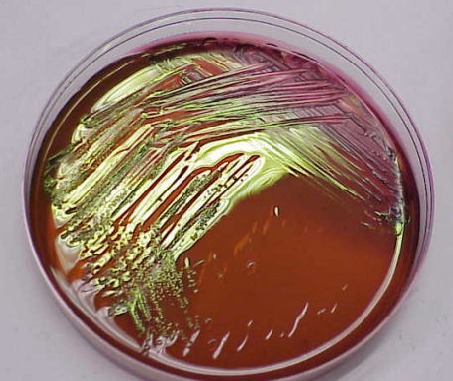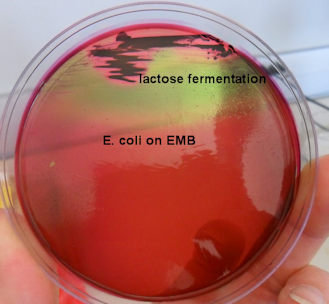23: Eosin Methylene Blue Agar (EMB)
( \newcommand{\kernel}{\mathrm{null}\,}\)
Learning Objectives
- To learn about the EMB agar
- Observe changes in EMB after bacterial growth
EMB
EMB is a selective, differential agar medium used for isolation of gram negative rods in a variety of specimen types. It is used frequently in clinical laboratories.
Agents of EMB
The selective/ inhibitory agents of EMB are the dyes eosin Y and methylene blue. Methylene blue inhibits the gram + bacteria (eosin to a lesser extent), while eosin changes color, to a dark purple, when the medium around the colony becomes acidic.
EMB contents
EMB contains lactose and sucrose sugars, but it is the lactose that is the key to the medium. Lactose-fermenting bacteria (E. coli and other coliforms) produce acid from lactose use, and the combination of the dyes (which serve as pH indicators in this medium) produces color variations in the colonies because of the acidity. Strong acidity produces a deep purple colony with a green metallic sheen, whereas less acidity may produce a brown-pink coloration of colony. Nonlactose fermenters appear as translucent or pink.


Lactose-fermenter (E. coli) nonfermenter
plate at left enlarged
Various stages of bacterial formation in EMB
Colonies of lactose fermenters will appear very dark purple, or have dark purple centers.
SOME bacteria gram + bacteria may grow--although not well--particularly if you let cultures sit for more than a couple of days. Usually those species will show as pinpoint colonies.
Contributors and Attributions
Jackie Reynolds, Professor of Biology (Richland College)



